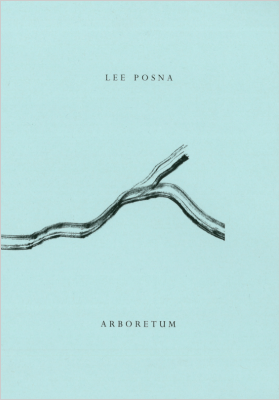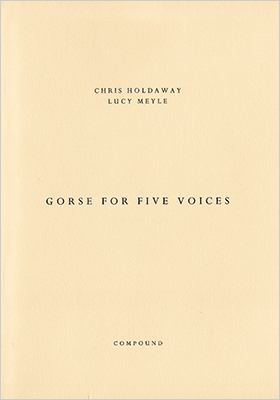Description
Chris Holdaway: In a world of writing workshops, ‘decadent’ poetry is often dismissed as showing a lack of restraint—as ‘weak’ therefore. But Arboretum in its elegiac dress surfaces as anything but fashionably terse. To what extent are you &/or text invested in ideas of excess, in terms of aesthetics, or just general ‘life in the world’?
Lee Posna: I think it’s just my predilection, and what I like to read/hear/see. Writers I love include: Stevens, Perse, Whitman, Carson, Hopkins, McCarthy, Mandelstam, romantic historians like Parkman and Michelet, Gibbon and Carlyle, as well as the KJV’s wisdom literature and poetic works of criticism like Kenners’ The Pound Era. That is, I find myself most drawn to dense, hypotactic writing. I admire Pound’s vortex and the ‘luminous detail’, and strongly believe in condensation as an essence of poetry – Dickinson is an ideal. But the more extreme examples of parataxis and modernist allusiveness are, for me, too resistant to temporal participation for the listener (at a reading) to be interesting. On the page it’s another story and requires a different and generally more rigorous kind of participation. I couldn’t read the Cantos without a companion or Celan without Felstiner. This kind of difficulty to me is different from, say, Stevens’: the latter has myriad sonic, syntactic and visual treasures for listener while often being perfectly idiomatic. One can certainly have too much negative capability – I’m often guilty of that charge. It’s important to stay critical, but no less so to be enchanted, and I’m most enchanted when I’m participating with a poem in a temporally linear, not to say undemanding, way. I’m suspicious of the idea that paratactic writing is fundamentally less hierarchical than hypotactic.
CH: A track that comes up in much of your other poetry is ‘ekphrasis’—writing about a work of art. I guess this has often been where you’ve sought to braid the poetic with the historical. Do you also see Arboretum as having an ekphrastic thread, albeit one driving to an abstracted extreme, taking in scope the very idea of an artist’s “empire of vision”, with no particular individual in mind?
LP: Strictly speaking, no, I don’t think of Arboretum as being ekphrastic, as in poetry written about art. By “empire of vision” I mean the wild, dark territory of the human condition an artist can penetrate into and hold, if only “for a day”. The landscape in the poem is a dark, wintry Danube in an ageing Western Roman Empire. The Danube corresponds to the artist’s blur spot or circle of confusion which, in photography, refers to the depth of field, the part of an image that is acceptably sharp, but here extends figuratively to ‘artistic vision’, i.e. insight, depth. I’m not sure I’ve answered your question, but I hope this primer for the poem’s conceit will be helpful to the reader.
CH: In tangling with florid/Romantic textual tradition, while also being emphatically aware of artistic medium & oeuvre, I feel like there’s an offer here of a different kind of Modernist critique—one that is more flatly expansive, rather than overly acute incision. This interests me, because I see a tendancy in the world to demand high overall consistency in the way the exploits of great artists or thinkers are viewed. The need for an infallibility, that in turn results in a stability that lends itself to being ‘mastered’, and can hold up under traditionally particular/sharp/pointed scholarship. As if we’ve not the courage to accept that the far messier reality of individuals. Take, for example, the recent discovery of new notebooks by Heidegger, which have been throwing some people for quite a loop all of a sudden. Is not that “very idea” of an artist’s oeuvre—and what it means collectively—quite an excessive and overdetermined one? Thoughts?
LP: Yes. An artist’s works can be as various and contradictory as an artist’s—or anyone’s—selves over time. Borges challenges the coherence, by way of the continuity, of the self in A New Refutation of Time: “a man has no life; not even one of his nights exists; each moment we live exists, but not their imaginary combination”. This is, if nothing else, a good metaphor for the sometimes extraordinary disjunction between our selves at different points in our lives and thus between our works. As Whitman says—however synchronically he meant it—”I contain multitudes”. On the other side of the coin, in terms of prescription, I would recommend a cultivated multitudinousness. Intentional consistency should generally be avoided, I think. As if it weren’t hard enough not to settle into a comfortable, habitual mode. We certainly don’t need to encourage writers to develop their ‘voice’. It will come sooner than any of us want.




